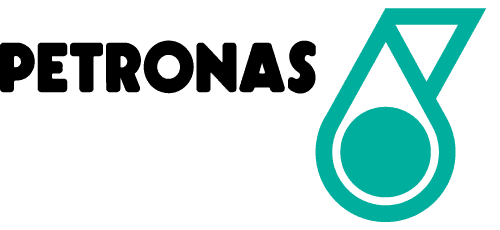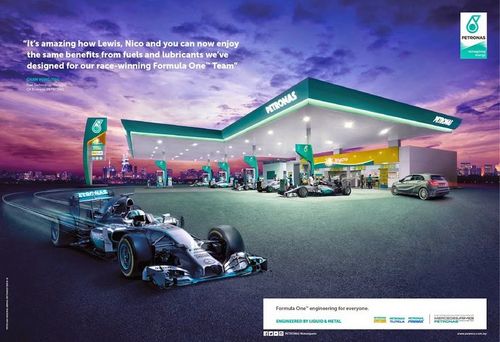The Marketing mix of PETRONAS analyses the 4Ps of PETRONAS, including the Product, Price, Place, and Promotions. PETRONAS is a short form of Petroliam Nasional Berhad. PETRONAS is a Malaysian national oil company founded on 17 August 1974. PETRONAS is headquartered in Kuala Lumpur. PETRONAS is more like an enterprise that follows all the paradigms developed by the government but is a private company.
With business in 35 countries and 19 subsidiaries, PETRONAS generates revenue of 100.744 Billion USD. Financial Times recently identified PETRONAS as one of the seven sisters manipulating and running the international gas and oil market.
British Petroleum, Total, and Royal Dutch Shell are PETRONAS’s top competitors in the international market.
About Petronas
- Type: Oil and gas company
- Industry: Energy
- Founded: 1974
- Founder: Tun Abdul Razak Hussein
- Headquarters: Kuala Lumpur, Malaysia
- Area served: Worldwide
- Key people: Tan Sri Mohd Bakke Salleh (Chairman) and Tengku Muhammad Taufik (CEO)
- Number of employees: 47,669
Table of Contents
PETRONAS Product Strategy
PETRONAS is a group of oil and gas companies that unite to form an alliance and operate in more than 35 countries. With 19 subsidiaries and 54 alliances, PETRONAS caters to millions of people. The world recognizes PETRONAS as an essential oil and gas partner. The industry is thriving, and PETRONAS is growing with the growing need.
Petronas, Malaysia’s national oil and gas company, is a fully integrated player in the global energy industry. The company’s product mix reflects its expansive operations across various oil and gas value chain segments.
The new Product Mix of PETRONAS in 2023 is as follows (Source).
- Upstream Exploration and Production: Petronas is involved in the exploration of oil and natural gas. This includes geological surveying, drilling, and extracting crude oil and natural gas from offshore and onshore fields.
- Liquefied Natural Gas (LNG): The company is one of the world’s largest exporters of LNG. This involves natural gas liquefaction for transportation and sale to international markets.
- Refining and Processing: Petronas operates refineries where crude oil is processed into various petroleum products, such as gasoline, diesel, jet fuel, and other specialty chemicals.
- Petrochemical Products: The company produces various petrochemical products in multiple industrial and consumer applications. This includes olefins, polymers, fertilizers, methanol, and other chemical products.
- Retail and Marketing Operations: Petronas has a significant presence in the retail sector with its network of service stations. These stations offer fuels and lubricants, as well as convenience store services.
- Lubricants and Functional Fluids: The company manufactures and markets a range of lubricants for automotive, industrial, and marine applications. These products are designed to enhance the performance and longevity of engines and machinery.
- Gas Pipeline and Infrastructure: Petronas owns and operates an extensive network of pipelines and infrastructure for the transportation and distribution of natural gas domestically and internationally.
- Renewable Energy and Sustainability Solutions: In line with global trends, Petronas also invests in renewable energy sources and sustainability projects. This includes solar power, wind energy, and carbon capture and storage initiatives.
- Engineering and Technical Services: Petronas provides various engineering services, technical support, and consultancy in the oil and gas sector. This includes project management, construction, and maintenance services.
PETRONAS Place Strategy
With its headquarters in Malaysia, PETRONAS has a better hold over the Asian oil and gas market. With an impressive number of alliances in Asian countries, PETRONAS is growing and is also among the most profitable companies here. The growth of PETRONAS in European countries is also increasing; sooner or later, BP and other competitors will have to re-consider their business development strategy to tackle the impressive growth of PETRONAS in different markets.
British Petroleum is the biggest competition for PETRONAS in the European region. PETRONAS can overtake BP in the European market by managing oil prices, building secure links, and making a mark.
With successful sales operations in more than 35 countries, PETRONAS is growing stronger daily. The fact that PETRONAS caters to Domestic users and Industrial clients with equal enthusiasm is the reason for its huge success.
Here is the place strategy of Petronas.
- Global Upstream Operations: Petronas has a significant global footprint in oil and gas exploration and production, with operations in various regions, including Southeast Asia, the Middle East, Africa, and the Americas. This wide geographical spread allows the company to access diverse energy reserves and spread its operational risks.
- Strategic Refineries and Processing Facilities: The company operates key refining and processing facilities in Malaysia and internationally. These facilities are strategically located to optimize access to raw materials and markets, ensuring efficient production and distribution.
- Extensive Network of Service Stations: Petronas has a vast network of service stations in Malaysia and select international markets. These stations sell fuels and lubricants and serve as retail hubs, enhancing brand visibility and customer engagement.
- LNG Export Terminals and International Trade: Petronas is a leading player in the global LNG market, with significant export terminals in Malaysia. The company’s sNG is transported to various international markets, positioning Petronas as a critical player in the worldwide energy trade.
- Investments in Renewable Energy and Diverse Markets: Recognizing the shift towards sustainable energy, Petronas is investing in renewable energy projects and expanding its presence in diverse markets, including solar and wind energy sectors. This approach aligns with global energy trends and broadens the company’s base.
PETRONAS Pricing Strategy
In the petroleum sector, pricing depends on many external factors like the cost of mining, the currency in which the transaction is made, and other factors like the economy and individual needs of a country. Many countries tend to increase taxes on oil and gas to strengthen their economy. Today, countries in Asia are enjoying access to cheaper oil and gases because of a massive decrease in prices at the international level.
Pricing is generally monitored by the government, which includes factors like benefiting oil companies, which suffer due to sudden increases in premium prices and a decrease in pricing at the international level. Governments of almost every country work with these companies and tend to help them cope with sudden fluctuations in pricing by providing compensation or subsidies.
Pricing and marketing strategy in the dynamic and complex global energy market is a nuanced blend of market responsiveness and strategic positioning. Here is a breakdown of their approach:
- Market-Based Pricing for Crude Oil and Natural Gas: In line with industry practices, Petronas prices its crude oil and natural gas based on prevailing global market conditions. This approach ensures that the company remains competitive and relevant in the international energy market, where worldwide supply and demand dynamics, geopolitical factors, and economic trends influence prices.
- Competitive Pricing in Downstream Products: Petronas adopts competitive pricing strategies for its refined products and petrochemicals. These products, including fuels and specialty chemicals, are priced considering global market trends and regional competitive landscapes. This strategy ensures market penetration and sustains profitability in various geographic segments.
- Value-Based Pricing for Specialized Services: Petronas likely employs a value-based pricing strategy in its engineering and technical services segment. This involves setting prices based on these services’ perceived value and specialized nature, aligning with industrial clients’ specific needs and expectations.
- Dynamic Pricing for LNG Exports: Petronas’s pricing of Liquefied Natural Gas (LNG) exports is dynamic and closely aligned with international market rates. Given the volatility in the LNG market, prices are adjusted to reflect current energy market conditions and long-term contractual agreements with global buyers.
- Retail Fuel Pricing Aligned with Regulatory Frameworks: In the retail segment, particularly in Malaysia, national regulatory frameworks often influence fuel prices. Petronas navigates these regulations to set competitive fuel prices at its service stations, balancing government policies, operational costs, and consumer expectations.
- Strategic Pricing in Renewable Energy Ventures: The company is exploring innovative pricing strategies in this sector as Petronas expands into renewable energy. This includes understanding the cost dynamics of renewable energy technologies and developing pricing models that are competitive yet sustainable in the evolving energy landscape.
PETRONAS Promotion Strategy
Being an enterprise that deals directly with customers, government, and other enterprises, PETRONAS hardly requires any promotion. It is a requirement of the contemporary world that runs on oils and gases that save these enterprises a lot of money in advertisement.
The need for petrol and gases coaxes people to visit the gas station almost daily. Such industries hardly require paid promotions or marketing and promotional campaigns. The governments support these companies by forming alliances and acquiring subsidiaries to regulate gas and oil availability nationwide.
PETRONAS is a Malaysian enterprise with a market share in every corner of Asia. Without spending money on promotion and marketing, it proves how helpful oil and gas are for the contemporary world.
Some Recent Video ads and Print ads of PETRONAS are:
Liked this post? Check out the complete series on Marketing Mix

